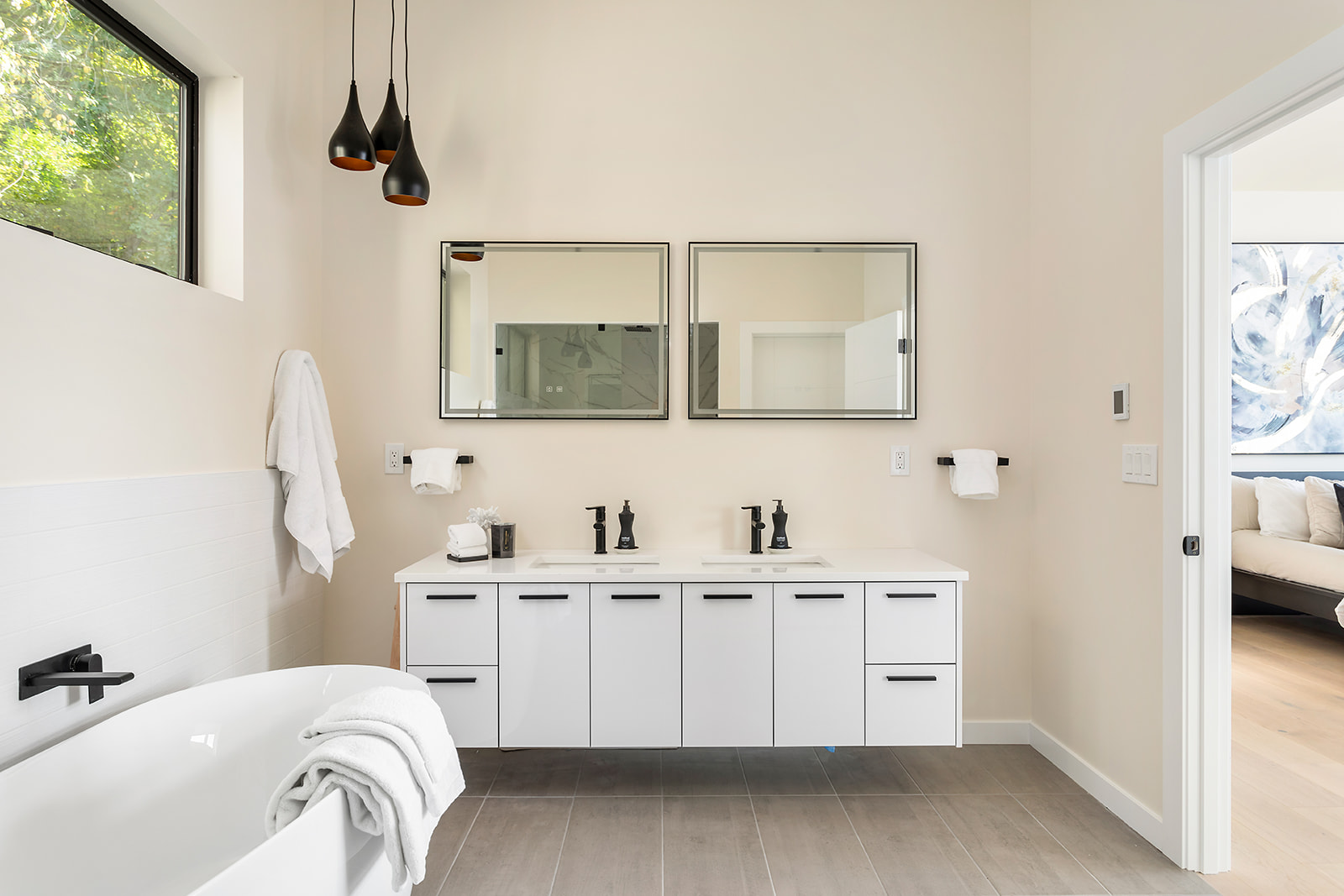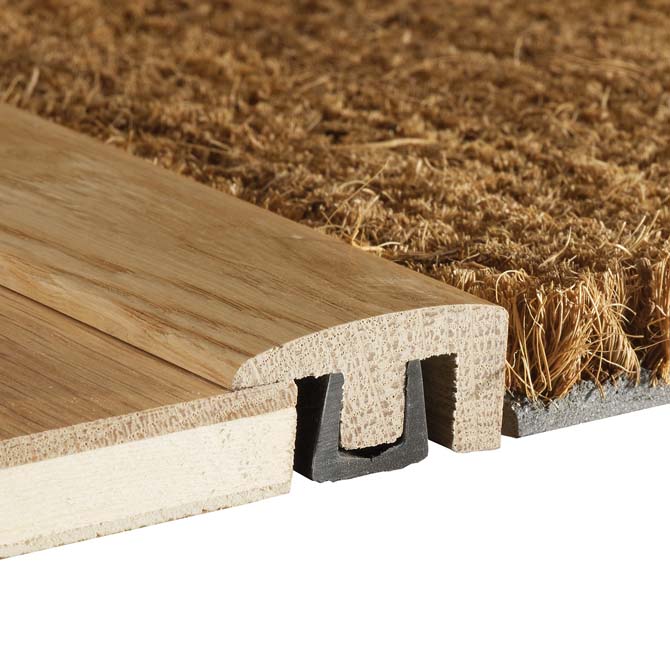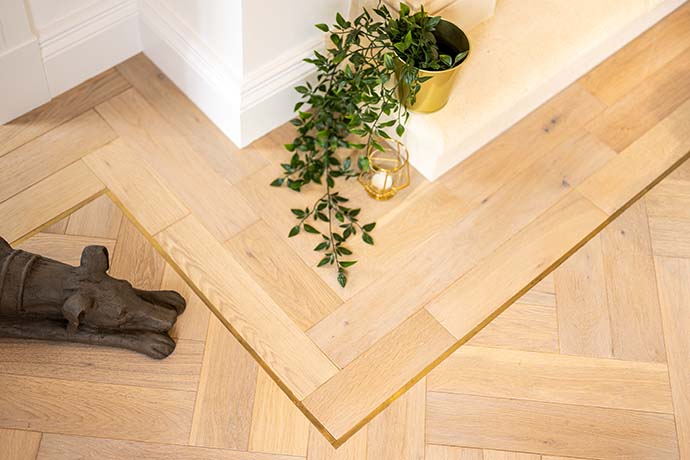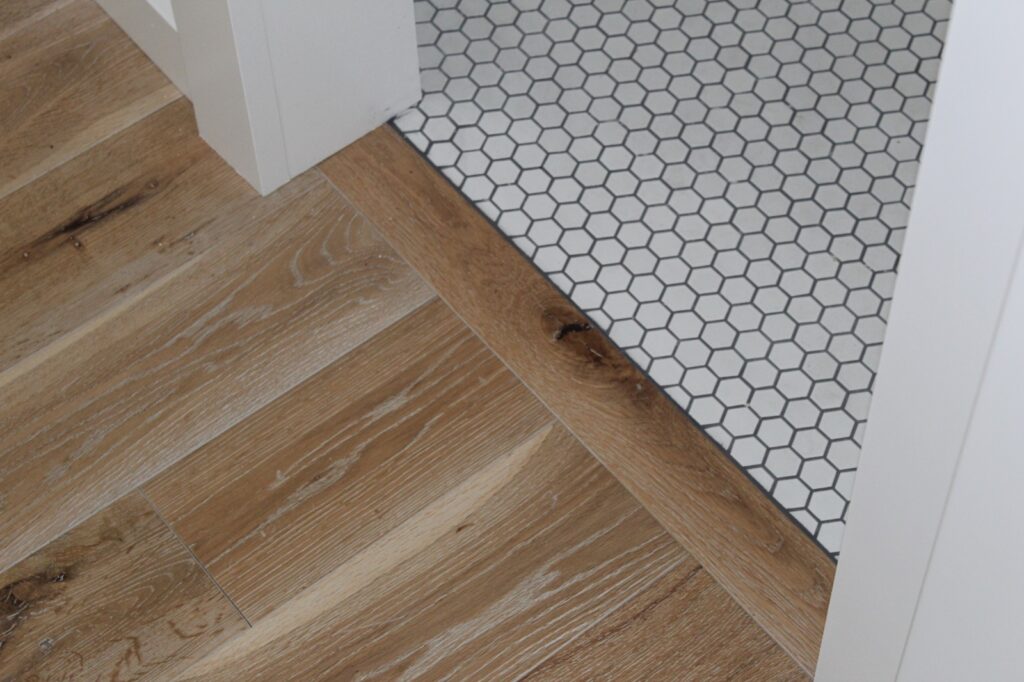How to transition between floors

When it comes to interior design, one aspect that often gets overlooked is transitioning between floors. Whether it’s transitioning from hardwood to tile, carpet to laminate, or any other combination, creating a seamless integration between two flooring types is crucial to maintain a harmonious and aesthetically pleasing flow in your space. Not only does it improve the visual appeal, but it also ensures safety by reducing trip hazards. This guide will introduce you to various methods and techniques to achieve a smooth flooring transition.
Just what are transitions? Transitions allow us to move from one different floor covering to the next. They allow us to change directions in hardwood. They allow us to continue a run of hardwood and so on.
What types of transition pieces exist and how do we use them? Woodpecker itself carries 4 types of transitions. These can be your End transitions, Twin transitions, Ramp transitions, or my personal favorite, Brass Inlays.




- End transitions are generally used to go up against sliding glass doors. Sometimes you can even use them going from Luxury Vinyl to carpet depending on their height.
- Twin transitions are used to go from two different materials of the same height or use them to change directions. This could be hardwood flooring into tile. But the same height is required to use these pieces. You’ll generally see them in doorways when you’ve got hardwood running in the hallway and then change the direction of that hardwood into a bedroom.
- Ramp transitions allow us to go from floor coverings of different heights. This might look like hardwood that is ½” thick transition to a tile that is ¾” thick.
- Brass Inlays! For all my designer friends out there, this is for you. Brass inlays are transitions pieces that really make a certain part of your flooring a statement piece. This could look like a hallway with some herringbone in the center with a brass inlay border that transitions into plank wood flooring. It’s stunning and totally unnecessary but we absolutely drop our jaws when we see it.
But wait.. there’s ONE more!




Seamless transitions, as the name suggests, are designed to merge two different flooring types in an unnoticeably smooth manner. A popular method to achieve this elegant and seamless transition is by using caulking. When applied with finesse and precision, caulking can blend the seam between two different types of floors, creating a visually cohesive and uninterrupted floor surface. The result is an elegantly unified interior space that flows seamlessly from one area to the next, contributing to a harmonious and aesthetically pleasing interior design.
In summary, the quality of a project is determined by its final details, and giving careful attention to transitions can truly enhance your work. They serve both functional and aesthetic purposes, ensuring safety while enhancing the visual harmony of a space. From End and Twin transitions to Ramp transitions and Brass Inlays, each provides a unique solution depending on your flooring types and design preferences. Additionally, seamless transitions offer a refined and elegant solution for a smooth and uninterrupted flow. No matter your choice, a well-considered transition can significantly elevate the aesthetics of your interior design while ensuring the safety and longevity of your floors.

